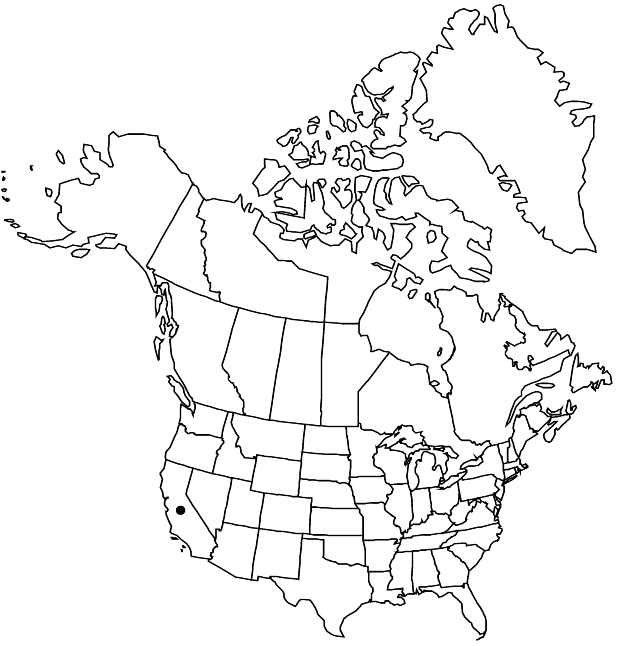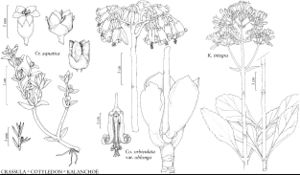Difference between revisions of "Cotyledon orbiculata var. oblonga"
in A. P. de Candolle and A. L. P. P. de Candolle, Prodr. 3: 396. 1828,.
FNA>Volume Importer |
imported>Volume Importer |
||
| (6 intermediate revisions by 2 users not shown) | |||
| Line 1: | Line 1: | ||
{{Treatment/ID | {{Treatment/ID | ||
|accepted_name=Cotyledon orbiculata var. oblonga | |accepted_name=Cotyledon orbiculata var. oblonga | ||
| − | |accepted_authority=(Haworth) | + | |accepted_authority=(Haworth) de Candolle |
|publications={{Treatment/Publication | |publications={{Treatment/Publication | ||
|title=in A. P. de Candolle and A. L. P. P. de Candolle, Prodr. | |title=in A. P. de Candolle and A. L. P. P. de Candolle, Prodr. | ||
|place=3: 396. 1828, | |place=3: 396. 1828, | ||
}} | }} | ||
| − | |basionyms={{Treatment/ID/ | + | |special_status={{Treatment/ID/Special_status |
| + | |code=I | ||
| + | |label=Introduced | ||
| + | }}{{Treatment/ID/Special_status | ||
| + | |code=F | ||
| + | |label=Illustrated | ||
| + | }} | ||
| + | |basionyms={{Treatment/ID/Basionym | ||
|name=Cotyledon oblonga | |name=Cotyledon oblonga | ||
|authority=Haworth | |authority=Haworth | ||
| + | |rank=species | ||
| + | |publication_title=Syn. Pl. Succ., | ||
| + | |publication_place=106. 1812 | ||
}} | }} | ||
|synonyms= | |synonyms= | ||
| Line 24: | Line 34: | ||
|habitat=Sage scrub, 0-50 m | |habitat=Sage scrub, 0-50 m | ||
|distribution=Calif.;s Africa. | |distribution=Calif.;s Africa. | ||
| − | |discussion=<p>First collected in the flora area in 1917 by L. R. Abrams (6555, DS), Cotyledon orbiculata was locally common for years in coastal sage scrub on south-facing bluffs above Newport Bay, Orange County (R. V. Moran 1993, fig. 1), but with creeping urbanization is now nearly gone. In June 1995, the one remaining colony was 10 m wide, with just over 100 flowering stems. This taxon sometimes persists about abandoned gardens in southern California north to Monterey County; C. F. Smith (1976) noted it as becoming naturalized in waste places in Santa Barbara. It is introduced also in South Australia (P. I. Forster 1996).</p><!-- | + | |introduced=true |
| + | |discussion=<p>First collected in the flora area in 1917 by L. R. Abrams (6555, DS), <i>Cotyledon orbiculata</i> was locally common for years in coastal sage scrub on south-facing bluffs above Newport Bay, Orange County (R. V. Moran 1993, fig. 1), but with creeping urbanization is now nearly gone. In June 1995, the one remaining colony was 10 m wide, with just over 100 flowering stems. This taxon sometimes persists about abandoned gardens in southern California north to Monterey County; C. F. Smith (1976) noted it as becoming naturalized in waste places in Santa Barbara. It is introduced also in South Australia (P. I. Forster 1996).</p><!-- | ||
--><p>The plants are highly poisonous to goats and sheep, and the meat of animals killed by cotyledonosis remains toxic even after cooking (T. C. Fuller and E. McClintock 1986).</p> | --><p>The plants are highly poisonous to goats and sheep, and the meat of animals killed by cotyledonosis remains toxic even after cooking (T. C. Fuller and E. McClintock 1986).</p> | ||
|tables= | |tables= | ||
| Line 34: | Line 45: | ||
-->{{#Taxon: | -->{{#Taxon: | ||
name=Cotyledon orbiculata var. oblonga | name=Cotyledon orbiculata var. oblonga | ||
| − | + | |authority=(Haworth) de Candolle | |
| − | |authority=(Haworth) | ||
|rank=variety | |rank=variety | ||
|parent rank=species | |parent rank=species | ||
| Line 48: | Line 58: | ||
|publication title=in A. P. de Candolle and A. L. P. P. de Candolle, Prodr. | |publication title=in A. P. de Candolle and A. L. P. P. de Candolle, Prodr. | ||
|publication year= | |publication year= | ||
| − | |special status= | + | |special status=Introduced;Illustrated |
| − | |source xml=https:// | + | |source xml=https://bitbucket.org/aafc-mbb/fna-data-curation/src/2e0870ddd59836b60bcf96646a41e87ea5a5943a/coarse_grained_fna_xml/V8/V8_314.xml |
|genus=Cotyledon | |genus=Cotyledon | ||
|species=Cotyledon orbiculata | |species=Cotyledon orbiculata | ||
Latest revision as of 22:42, 5 November 2020
Shrubs, branching near base. Stems 10–18 mm diam., stiff. Leaves 2–4 pairs; blade often red-edged, apex rounded, cuspidate, surfaces farinose [green]. Inflorescences: peduncle stout, 2–5 dm, nearly leafless; cyme broad, 10–30-flowered. Pedicels pendent in flower, erect in fruit, 1–3 cm. Flowers: sepals triangular, 2–5 mm; corolla tube 15–25 mm, with hairy ring in proximal 1/4, lobes convolute in bud, [spreading] recoiled in anthesis, 10–15 × 6 mm; nectaries yellow, 2 mm wide; stamens 3 cm; epipetalous filaments adnate to corolla in basal 1/4; anthers 2.5–3.5 mm; gynoecium green, 3 cm × 6 mm; pistils appressed, tapering gradually into slender styles. 2n = 18.
Phenology: Flowering early summer.
Habitat: Sage scrub, 0-50 m
Distribution

Introduced; Calif., s Africa.
Discussion
First collected in the flora area in 1917 by L. R. Abrams (6555, DS), Cotyledon orbiculata was locally common for years in coastal sage scrub on south-facing bluffs above Newport Bay, Orange County (R. V. Moran 1993, fig. 1), but with creeping urbanization is now nearly gone. In June 1995, the one remaining colony was 10 m wide, with just over 100 flowering stems. This taxon sometimes persists about abandoned gardens in southern California north to Monterey County; C. F. Smith (1976) noted it as becoming naturalized in waste places in Santa Barbara. It is introduced also in South Australia (P. I. Forster 1996).
The plants are highly poisonous to goats and sheep, and the meat of animals killed by cotyledonosis remains toxic even after cooking (T. C. Fuller and E. McClintock 1986).
Selected References
None.
